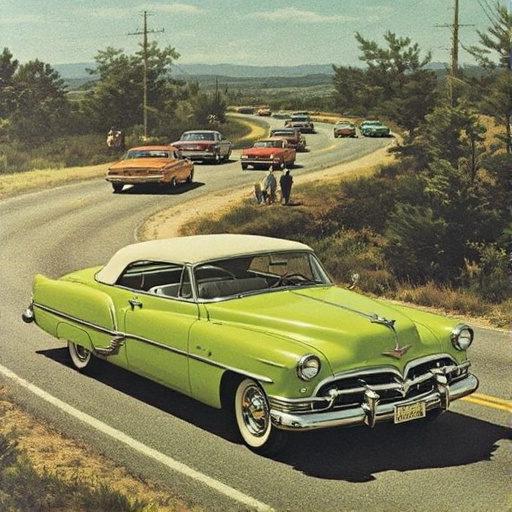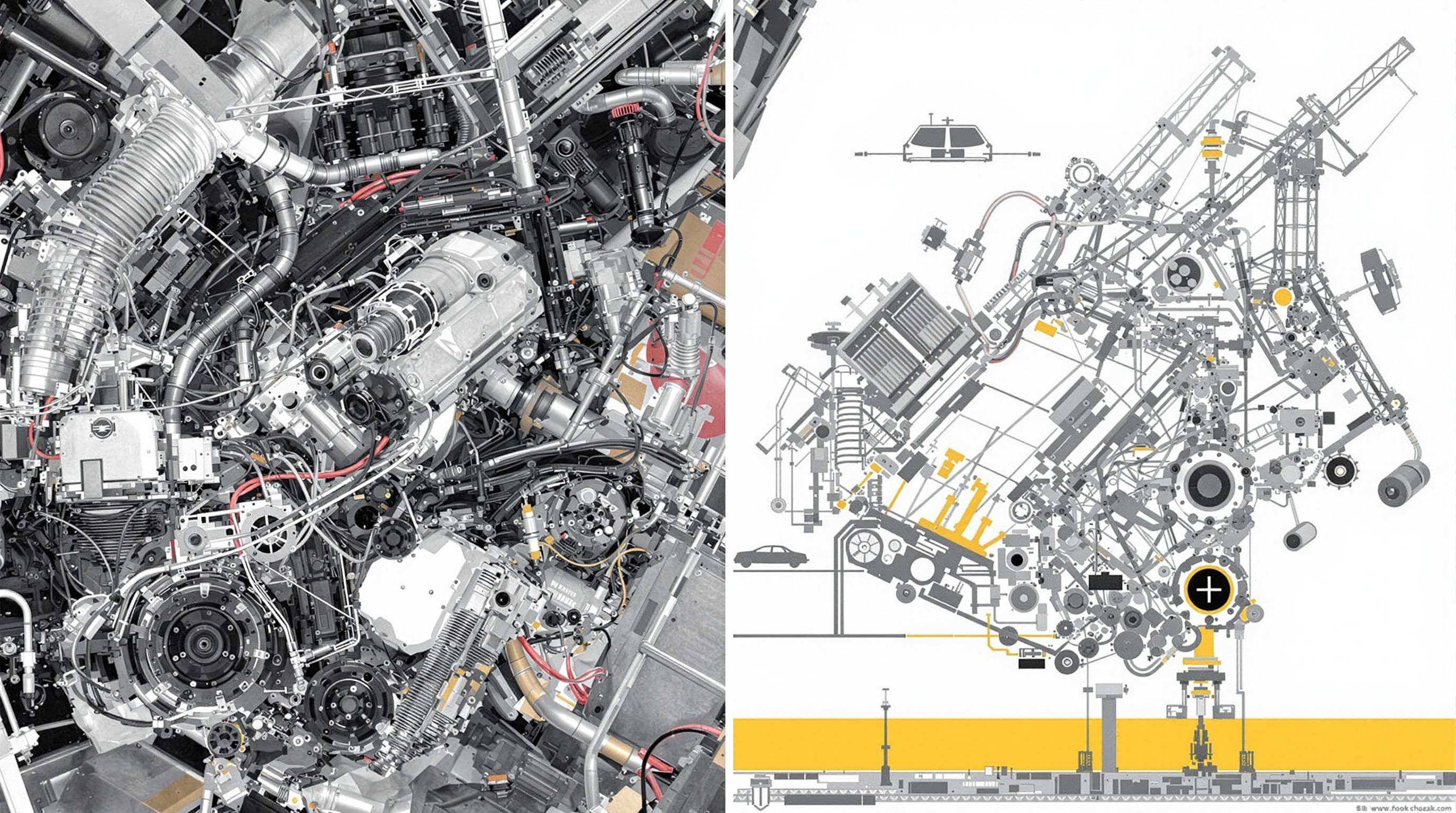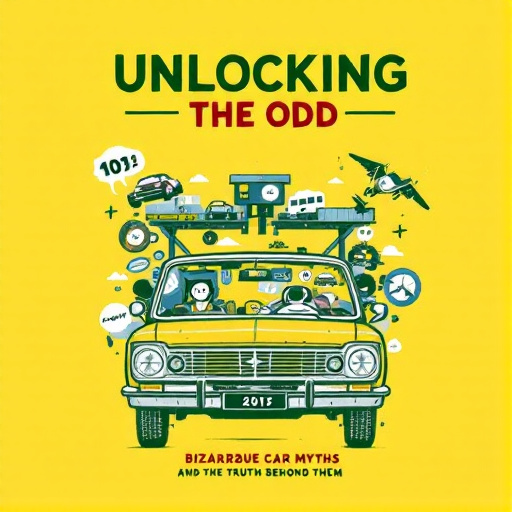Related Articles
- Unveiling the Unthinkable: How Your Social Media Posts Could Impact Your Car Insurance Premiums
- "From Showroom to Social Media: How Dealerships are Becoming Digital Storytellers in 2023"
- "From Showroom to Stream: The Rise of Virtual Reality Test Drives at Dealerships"
- Revving Up Sales: How Virtual Reality is Transforming the Dealership Experience for Shoppers and Sellers Alike
- Selling Experiences: How Dealerships Can Transform into Immersive Automotive Entertainment Hubs
- The Surprising Impact of Your Credit Card Habits on Car Financing: What You Didn't Know!
The Secret History of Car Colors: How Shades Influenced Road Safety and Cultural Trends
The Secret History of Car Colors: How Shades Influenced Road Safety and Cultural Trends
Car colors have a fascinating history that intertwines with cultural trends and road safety issues. From the classic appeal of black cars to the vibrant hues favored by millennials, the choice of automobile color has shaped and been shaped by societal norms and safety regulations over the decades.
The Color Spectrum: A Historical Overview
In the early 20th century, cars were predominantly black. Why? Because of production efficiency and the availability of black paint. This trend was driven by Henry Ford’s Model T, which was offered only in black for a significant period. As time progressed, painting became an art, and colors began to reflect personal choices, regional styles, and marketing strategies rather than simple functionality.
A Splash of Color: The Evolution of Automotive Paint
By the mid-1950s, with the rise of the American car culture, vibrant colors became symbols of status and self-expression. Cars in shades like coral pink, sky blue, and mint green filled the streets. The introduction of metal flake and pearlescent paints further ignited this colorful revolution, with brands like Cadillac and Chevrolet leading the charge. According to a survey by PPG, around 60% of consumers preferred non-traditional colors in this era!
The Psychological Impact of Color
Color psychology plays a significant role in how people perceive cars. A study published in the journal *Color Research and Application* notes that blue often evokes feelings of trust and calmness, while red is associated with excitement and aggression. This psychological aspect has had a considerable impact on how manufacturers design their models. It is no surprise that certain colors often dominate market trends; in fact, research shows that nearly 45% of people believe their car’s color impacts their mood.
Road Safety and Visibility
Color choices also come with safety implications. According to traffic safety studies, brightly colored cars—most notably those in shades of yellow, orange, or bright red—are less likely to be involved in accidents. A comprehensive analysis by the Monash University Accident Research Centre revealed that white cars, a shade often favored for its visibility, are 12% less likely to be involved in car accidents compared to their black counterparts, which blend into the nighttime shadows. So, the next time you're at a dealership, remember: that eye-popping yellow may just save your life!
The Black Car Dilemma
Despite the popularity of vibrant colors, black cars have maintained a notorious reputation for being the hardest to see, especially at night. In urban settings where streetlights illuminate the area, black vehicles can remain unseen until the last moment—yikes! Some auto manufacturers have even gone so far as to encourage buyers to consider brighter hues for safety. Isn’t it ironic how the sleek black cars trusted by many can turn into shadows on the road?
Colors and Cultural Trends
Colors of cars have also echoed larger cultural shifts. In the 1970s, the rise of environmental consciousness led to the popularity of more muted, natural colors like earthy browns and greens as society leaned toward the ’back-to-nature’ ethos. These color trends often mirror broader societal discussions, such as the explosion of neon colors in the 1980s that represented the fast-paced, high-energy lifestyle typical of that decade.
Case Studies: The ’Millennial Blue’ Phenomenon
Fast forward to the 21st century, and let’s talk about the influx of millennials into the car market. Recent studies show a noteworthy preference for blues, teals, and greens among younger buyers. Not only are these colors perceived as stylish and distinctive, but they also convey individuality—an essential factor for a generation that prizes personal branding. It’s a shift that reflects a desire for what feels relatable and fresh in a time of overwhelming consumer options.
Cultural Significance: Beyond Safety
Interestingly, car colors often reflect broader cultural sentiments. For instance, the surge in popularity of white cars since the 2000s has been interpreted as a reflection of minimalism and a return to simplicity within consumer culture. In Japan, for example, white has become synonymous with purity and cleanliness, mirroring cultural values inherent to Japanese society. According to the *Automotive Color Trends 2021* report by Axalta, approximately 35% of cars sold in Japan were white, highlighting its dominant cultural influence.
The Jurisprudence of Color: Legal Conflicts
Color is not just a personal choice or a marketing tool; it can also lead to legal disputes. In some instances, trademark laws have prevented manufacturers from releasing specific shades because they were too similar to competitor colors. Notably, the famous *Tiffany Blue* has become a proprietary color, resulting in legal battles when competitors attempted to market anything resembling that signature hue. As you can see, the politics of color in the automotive industry runs darker than it appears!
The Humor of Color Choice
Let’s take a moment to lighten the shades. Ever noticed how certain car colors seem to have personality traits? You could say red cars are the extroverts at the party, while silver ones are like the introverts, quietly blending in. And what about those drivers in bright orange vehicles? Certainly not shy! So, perhaps next time you see a car that really stands out, remember that it might just be a personality on wheels.
Statistics on Color Popularity: What the Numbers Say
To underscore the ongoing love affair with specific car colors, let’s throw some stats into the mix. According to the same PPG survey mentioned earlier, the distribution of car colors in 2022 looked like this: white (35%), black (19%), grey (17%), and silver (14%). Blue and red trailed behind at 9% and 8% respectively. It’s fascinating to consider that out of a diverse palette, consumers still gravitate towards these mainstream, classic shades. The age-old question of individuality versus conformity could spark lively discussions at any car enthusiast gathering!
Conclusion: A Driving Force of Change
Ultimately, the choice of car color intertwines with the narratives of personal identity, road safety, and cultural developments. As cars evolve into artful machines that reflect our identities, the decision surrounding their colors will continue to shape not just our experiences on the road but society itself. For those about to hit the car market, think not just about aesthetics, but consider the safety, cultural significance, and even a sprinkle of psychology that goes along with every shade. Because, in the end, color choice is indeed a highway of personal expression and cultural reflection.
Final Thoughts
So, next time you’re driving down the road, take a moment to notice the colors around you. Each one tells a story—yours, mine, and that of society at large. Whether you’re a fan of the understated elegance of grey or the flamboyant energy of lime-green, remember: the color of your car isn’t just surface-deep; it’s a reflection of who you are and where we’re all headed together.



